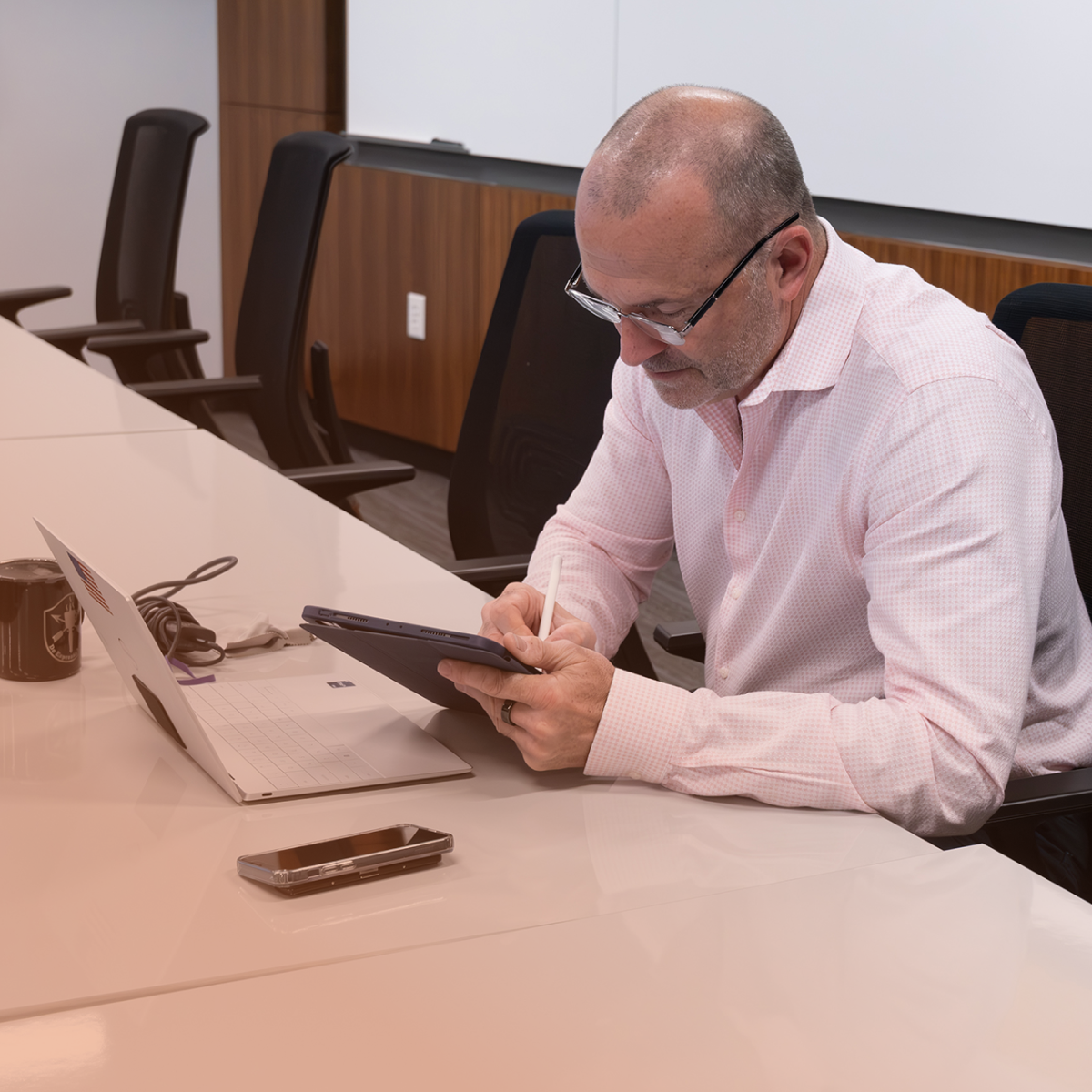What does a hybrid work environment really mean for individuals and leaders? The popular perception is that a hybrid work environment will allow for flexibility and freedom; however, these new operating models are far from a panacea. For those leaders who choose to move to a hybrid model, this change will introduce novel challenges that require a thoughtful approach to combat these challenges and ensure inclusivity.
We’ve all been there. We’ve all been either a witness or a victim of the unplanned interruption by screaming kids, a barking dog, or unexpected bandwidth issues. These untimely interruptions have become second nature when working from home – as common as a teammate forgetting to click the “unmute” button.
Working from home has been the great equalizer. For some, these interruptions will become something of the past, a distant memory that you and your coworkers laugh about one day as they return to sit side-by-side in cubicles. Others may have neither the ability nor the choice to forget about these distractions and will continue to function in these types of environments going forward. Particularly for working parents (and women in particular), these seemingly temporary conditions will become an ongoing reality.
Just over a year removed from the most dramatic shift in work culture in modern history, it has become evident that the next large-scale disruption to the work environment is already in our midst. This time, however, it is not an unplanned, panicked move from the familiarity of in-person work to a fully remote work environment. It is the calculated decision to weigh out the competitive advantages (and drawbacks) of moving to an operating model of hybrid work.
As organizations are making plans to return to the office in some fashion, the phrases “hybrid working model,” “hybrid environment,” or “hybrid teams,” have become common fare. But what does a hybrid work environment really mean for individuals and leaders? The popular perception is that a hybrid work environment will allow for flexibility and freedom, and while there is some truth to that, these new operating models are far from a panacea. For those leaders who choose to move to a hybrid model, this change will introduce novel challenges that require a thoughtful approach.
Of course, there are the tactical issues of coordination, communication, and a heavier reliance on technology but there is a deeper and more complex cultural challenge that must be addressed: one of inclusion. This challenge will manifest itself in a number of different scenarios with cascading effects. For example, working parents, women especially, will be more likely to remain at home. Colleagues who return to the office will build relationships more easily and maintain a visible presence that increases their credibility and social capital. A recent Catalyst survey found that 45% of female business leaders reported that it is difficult for women to speak up in virtual meetings. In addition, one in five women say they have been overlooked or ignored by colleagues in video calls. While hybrid work does provide essential flexibility for working parents, there is a very real danger that this operating model may exacerbate the already existing gender gap in the professional workplace.
So, how do leaders make their hybrid work teams more inclusive? How do we encourage remote team members to voice up?
Voicing up is the willingness and opportunity for team members to openly share their ideas, perspectives, concerns, and issues with a leader.
Voicing up is critical in all working environments to enable leaders to seize opportunities and mitigate risk. The Challenger tragedy in 1986 provided a tragic, real-life example of what can happen when all voices are not heard and perspectives not considered. The Challenger was a NASA space shuttle that tragically exploded 73 seconds after take-off, killing all seven people on board. Conditions were less than ideal during launch (colder temperatures than anticipated), and many NASA engineers and managers knew this created an unacceptable level of risk. When they expressed these concerns, they were ignored, ultimately resulting in the fatal explosion.
Most often, teams address this lack of open communication by focusing on leader behaviors. However, fostering behavior change is a necessary yet an insufficient strategy on its own. Behaviors are part of the equation but they won’t drive real culture change unless they are combined with new processes.
BEHAVIORS TO ENCOURAGE VOICING UP
- Ask powerful questions. Superficial questions like, “what do you think?” are not going to yield the most helpful answers. Instead, make the effort to formulate insightful, open-ended questions and then take the time to truly listen to your team’s responses. Be genuinely curious.
- Hold back your opinion. If you begin a meeting or conversation with, “here is what I think…” your opinion will immediately bias the room. Ask remote staff and/or the most junior team members to share first so that you get their untainted perspective.
- Be vulnerable. If you always seem to know the answer and create a persona of perfection, your team members will not share a dissenting opinion. Assuming that leadership has it “all figured out,” teammates may believe that speaking up would be a waste of their time. Instead, openly share with the team when you are uncertain or unsure. Acknowledge when you make a mistake and ask for their help.
- Follow up on rejected ideas. Even if someone shares an idea that is ridiculous or infeasible, ensure you are not preventing ideas from being presented in the future. On the one hand, don’t just ignore the idea. If your team does not think their ideas will be acted upon, they will stop sharing. On the other hand, do not pretend the idea they shared is a good one – you may appear inauthentic to teammates who can easily identify bad ideas. Instead, give your team member the respect they deserve. Genuinely thank them for their input, try to find some portion of the input that was valuable and compliment them for that, and then explain why that idea will not be acted upon in that situation.
- Reward speaking up. When someone does provide constructive critique or raises an important risk, ensure you respond in a way that demonstrates to the rest of the team that you welcome when teammates speak up.
PROCESSES TO ENABLE VOICING UP
- Create space on your calendar. If your schedule is constantly packed, your people may not feel that they have the opportunity to actually share their thoughts with you. If you can’t schedule regular one-on-one meetings with your team, then at least schedule regular “office hours” when your team knows they can steal a few minutes of your time. When teammates do approach you for a meeting, give them your undivided attention.
- Dedicate regular time in team meetings. Many leaders ask their team in the last two minutes of their team meeting, “does anyone want to raise anything else?” No one speaks up because there isn’t enough time for a real discussion. Instead, dedicate time in the middle of your meeting to hear the team’s perspective on challenging issues. Make it a regular part of the agenda and prioritize it every time.
- Assign every team member a ‘Swim Buddy.’ Special Operations military units pair up two new recruits, making them swim buddies who provide each other with support, accountability, and safety. Pair up your team (especially remote teammates with those who work from the office). These pairs can use each other as a sounding board to share their perspectives, encouraging each other to voice up on critical issues.
Hybrid work is not the answer for every organization. The operating model offers distinct benefits and drawbacks that must be thoughtfully weighed out by leaders across industries. For those who see a true competitive advantage in this operating model, they must find a way to be inclusive, creating a team culture where team members, regardless of their location, can voice up in a productive and meaningful way. This is not just a moral imperative but a performance imperative that will enable their team to tackle whatever comes next.


